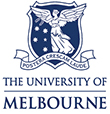Ultraviolet radiation vs air filtration to mitigate virus laden aerosol in an occupied clinical room
Authors:
- Landry, Shane A.
- Jamriska, Milan
- Menon, Vinay J.
- Lee, Leo Yi Yang
- Magnin-Bougma, Isabelle
- Subedi, Dinesh
- Barr, Jeremy J.
- Monty, Jason
- Kevin, Kevin
- Gunatilaka, Ajith
- Delaire, Michelle
- Marks, Guy B.
- Stewardson, Andrew J.
- Morawska, Lidia
- Edwards, Bradley A.
- Majumdar, Suman S.
- Subbarao, Kanta
- Joosten, Simon A.
Details:
Journal of Hazardous Materials, Volume 487, 2025-04-05
Article Link: Click here
Mitigation measures against infectious aerosols are desperately needed. We aimed to: 1) compare germicidal ultraviolet radiation (GUV) at 254 nm (254-GUVUpper-Room) and 222 nm (222-GUVWhole-Room) with portable high efficiency particulate air (HEPA) filters to inactivate/remove airborne bacteriophage ϕX174, 2) measure the effect of air mixing on the effectiveness of 254-GUVUpper-Room, and 3) determine the relative susceptibility of ϕX174, SARS-CoV-2, and Influenza A(H3N2) to GUV (254 nm, 222 nm). A nebulizer generated ϕX174 laden aerosols in an occupied clinical room (sealed-low flow). Mitigation devices (3 commercial GUV devices, HEPA-470m3/hr-class H13 filter) were compared by counterbalanced experimental design with negative (no mitigation) control. Viral inactivation was determined by air sampling (SartoriusMD8 and Gilair5). Environmental physical properties (airflow, particle matter, GUV irradiance, temperature and humidity) were also characterized. The effect of improving air mixing on the efficacy of 254-GUVUpper-Room devices was systematically explored by adding fans. The relative susceptibility of SARS-CoV-2, Influenza A(H3N2) and ϕX174 were assessed by exposure to 254 nm and 222 nm wavelength radiation in a 82 L chamber. 254-GUVUpper-Room with highest irradiance (Philips UV-C WL345W) resulted in highest calculated equivalent air changes per hour (eACH) of 8.18 ± 0.74 (hr−1). This increased to 19.20 ± 2.45 (hr−1) with the addition of 2 fans. HEPA filtration achieved 11.10 ± 1.25 (hr−1). For 254 nm GUV rank order (most-to-least) of susceptibility was SARS-CoV-2, ϕX174, Influenza A(H3N2), and for 222 nm GUV SARS-CoV-2, Influenza A(H3N2), ϕX174. GUV effectively inactivates virus laden aerosol in poorly ventilated clinical environments. Efficacy is improved by increasing airflow. HEPA performance is superior to GUV under low flow conditions.


